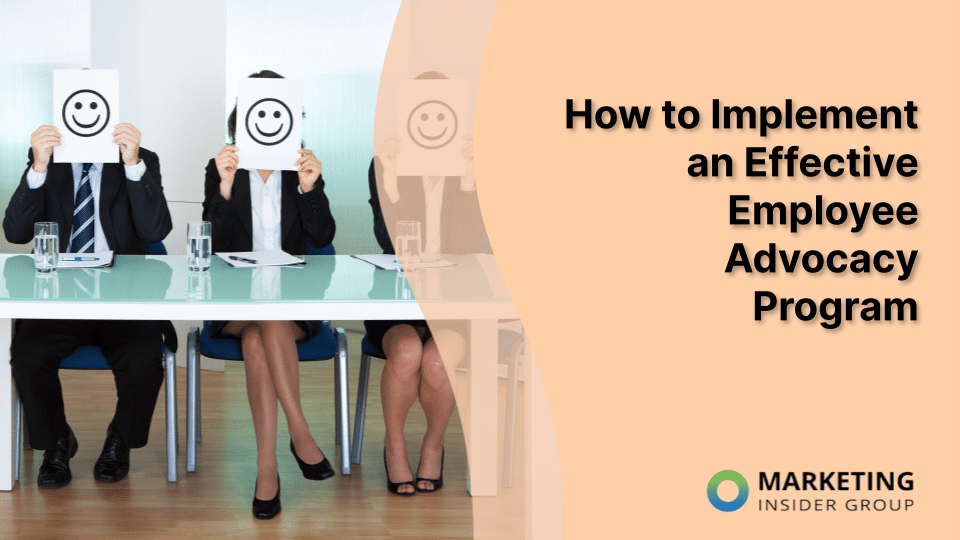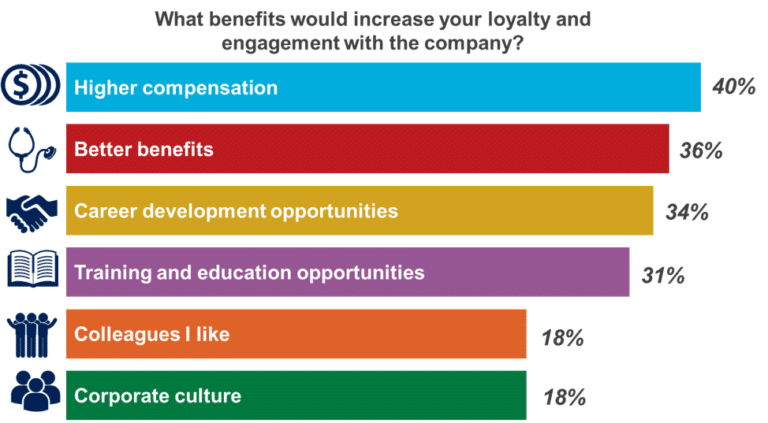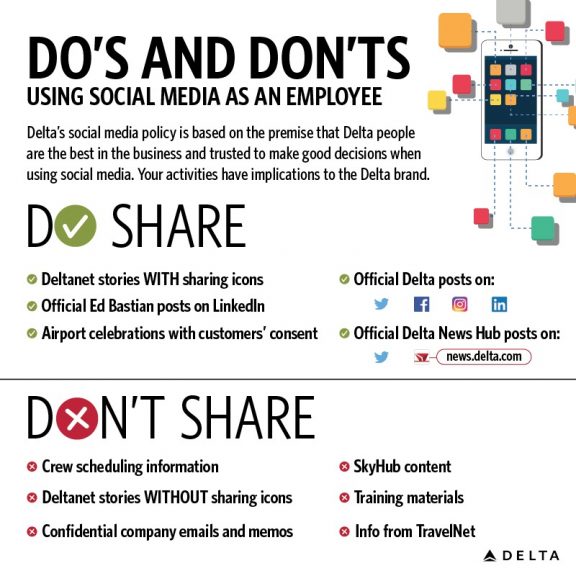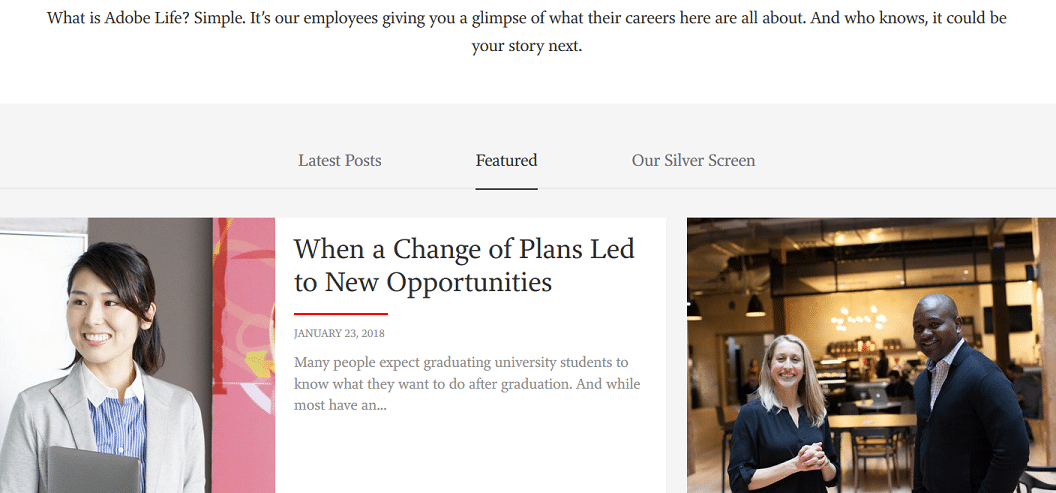
How to Implement an Effective Employee Advocacy Program
An employee advocacy program can be a fantastic way to build brand awareness, reach a wider audience, and attract new talent. However, it’s critical that such a program is planned and managed carefully so you can make the most out of your efforts.
A poorly executed employee advocacy program will be ineffective, but it could also be damaging to your company and brand reputation.
Make sure you get off to a strong start with employee advocacy by making yourself aware of some of the most common pitfalls. When you know the potential pitfalls, you can avoid them and ensure that both your business and your employees reap the maximum benefits of a robust employee advocacy program.
Quick Takeaways:
- Successful employee advocacy programs are planned strategically and implemented only after employee engagement is high and a content marketing strategy is in place.
- Don’t use your program purely as a marketing technique. Think about what’s in it for your employees too.
- Define goals and regularly measure results by tracking the metrics that are important for your business.
The Role of Employees in Advocacy Marketing
Advocacy marketing strategy goes beyond just your happy and engaged customer base. It also includes your employees who represent the brand. So, what exactly is employee advocacy (or as I like to call it, “employee activation“)?
Employee advocacy includes employees in social marketing and empowers them to share your brand’s content on their social networks. Employees often make the most effective brand advocates because they are passionate about what they do. Their social media networks tend to be in the same ecosystem as the company’s as well.
Employees have insider knowledge and can add to the company’s posts with personalized insights. Harnessing employee networks in social marketing is effective and doesn’t incur any new costs.
While these are the primary reasons why a company would put an employee advocacy strategy in place, there are many secondary benefits generated from a successful program, including the significant improvement of communication and collaboration among colleagues.
When it comes to employee advocacy, we tend to start with its benefits in aligning employees to communicate with people outside your company, however, it also strengthens the connections between peers and coworkers inside your company.
How to Implement an Employee Advocacy Marketing Program
Extending your reach and involving employees in social media efforts can be a huge win for your brand. Here are some tips on how to implement an employee marketing advocacy program:
1. Get buy-in from the management team
Prior to asking your employees to become advocates, it’s essential to share your plan and strategy with leadership. You need their buy-in, so explain to these stakeholders the benefits of advocacy marketing and why employees should be part of marketing efforts.
Take the time to educate this group on how employees spending a few minutes of their workday engaging with the brand on social media could reap real rewards.
2. Start with your employee activation goals
A lot of companies miss the mark with employee activation because they only build one-way of a two-way street. The end goal should go beyond empowering employees to further brand objectives.The company behind the brand should also be empowering employees to further their own professional goals.
When your culture is set up to launch each employee to their own version of career superstardom, you’ve hit employee activation nirvana – a dream team of inspired, passionate experts who want their brand to succeed because their organization wants them to succeed.
This is how you get something much more powerful than advocacy.Just as with the evolution of marketing to customer-centricity, employee activation needs to be more about the employee experience.
Not only will this create a more authentic and lasting culture of engagement, it will bring back returns in more ways than the traditional employee advocacy program can. Your employees’ work successes, proactive choices, and positive actions reflect well upon the brand itself, elevating both the individual and the whole.
It’s a win all around with improved brand reputation, marketing cost-savings, expanded reach and awareness, better customer relationship building, and higher demand for what your brand offers. Not to mention the benefits for recruiting – it costs a lot less to bring on the best of the best when your company is the team everyone wants to be on.
So instead of working to motivate your employees to advocate for something outside of them, build an employee activation program that invites them into the heart of the brand.
What do you hope to achieve by activating your employees? Before hashing out your plan, have a clear idea of your goals. Determine your marketing, business, and employee retention goals, looking at both short and long-term objectives.
- For example, what’s your target for page view numbers and lead generation and what do you want your social media numbers to look like in one month, three months, and six months after launching your activation initiative?
- Revenue growth, customer retention, upselling numbers – how do you expect these metrics to improve after a few months, a year, and more?
- What about costs of employee recruitment and rate of employee retention each year?
With crystal clear program goals, you’ll have a better idea of where to focus your employee activation program, whether the priority is to build trust in your brand or to become an organizational magnet for industry experts, or both.
When determining how to measure your goals, keep in mind, you’ll want to look at a combination of both quantitative and qualitative feedback – website traffic and click-through’s are telling, but so are customer and employee reviews, case studies, and customer feedback surveys.
3. Use social media the right way
Social posts shared by your employees generate eight times more social engagement than posts shared by your brand itself. And, those leads that come in from employee social sharing? They are seven times more likely to convert.
Another benefit is with HR. Socially engaged companies are known to be 58 percent more likely to attract top talent.
Even something as simple as asking employees to share your company’s social media updates can help to foster brand awareness big time. But, how sustainable is requesting social shares or even incentivizing with some type of reward program?
Instead of encouraging sharing, make it a system that employees can benefit from. When they can use branded social media accounts or other digital channels to promote their own expertise, they gain more thought leadership points as a representative of the brand and the brand gains thought leadership points by demonstrating the expertise of its staff.
Approach social media not just as a tool to expand the reach of your brand, but also as a platform to feature your internal experts.
Intel does a great job of this. The brand has a library of videos featuring Intel employees teaching Intel’s innovative business concepts and sharing news updates.
You’ll also find Intel employees and partnership projects featured on Intel’s social media pages.
Beyond featuring employees’ skills, personalities, and expertise, it’s also key to train them how to use different channels for social sharing.
Dell is at the mature end of the spectrum when it comes to empowering their employees with social platforms. They have a well-developed training program, Dell’s Social Media University, which teaches employees who want to be a part of the program to use branded social accounts to boost their own sales numbers. Their program includes a Governance system and available help and support.
4. Identify and educate employee advocates
Identify key employee brand advocates and train them on the importance of social engagement. Advise them of the benefits of becoming thought leaders in the industry and sharing their expertise.
Let them know that they can help spread your brand’s story to the right audiences and attract new people to the brand.
However, this is also a time when you need to set boundaries about how they should represent your brand on social media. You don’t want them to have any negative impact on the company’s reputation or their own.
5. Provide employee advocates guidelines and a framework
Of course, your advocates probably know how to use social media platforms. But being a brand advocate is a little different than posting what they had for dinner the night before.
You should set up guidelines for how they share the company’s content and how that might be different from the content they post about their personal lives.
They will need to appreciate the importance of observing corporate guidelines, do’s and don’ts, key hashtags, and best practices for engaging online while using company information.
You can educate by hosting informational sessions for employees about how to use their social profiles to benefit the brand. Specific groups, like sales, may need additional training as they are the ones most often engaging with customers and prospects.
Your employees should not be one-sided in the content they share. Yes, the majority of what you want them to post would be original content from your company or promotions. But it’s also great if they share content on their own, within guidelines, of company events, or their participation in trade shows and other media events.
You should also advise that sharing industry-specific content from third parties is a great idea. This sets them up as being in tune with what’s happening in your market and provides their followers with more education on how to resolve their challenges.
If they add specific commentary to the third-party share related to your company’s offerings, all the better.
6. Let employees know the results of their efforts
To keep employees engaged as brand advocates and instill more loyalty, it is important to show them the results of their efforts. This makes advocacy become a part of your company’s culture may make your company a better place to work in employees’ minds.
You should make sure to measure all the posts your advocates make and how they attract new audiences to the website, which ideally leads to conversions and sales. You can create a monthly report to share with your employees that shows how their posts have transformed into true ROI.
With certain platforms, you can personalize messages, see which influencers have the highest impact, and see how individual posts are doing based on engagement activities, such as shares, clicks, views and impressions. Offering this info will help your team understand your audiences.
By offering feedback, employee advocates will be more engaged and more willing to support your programs.
7. Foster a culture of ownership
Let’s be honest. Culture change isn’t all that easy to tackle, especially if marketing only has limited influence organization-wide. However, a culture of ownership is the foundation of a successful employee activation program.
So, focus on laying what cultural groundwork you can. A common mistake with employee activation and advocacy programs is to assume culture change is a result of employee activation, rather than a driver of it.
The goal is to create an environment where employees take as much ownership for the brand as the CEO. When each employee’s personal brand is intricately linked with the brand they work for, you have an aligned relationship where:
- It’s in employees’ best interests to give it their all, to put those creative, innovative ideas out there, and to challenge themselves.
- It’s in leadership’s best interests to support and empower, and to listen and respond to – and to value – feedback from employees.
Paul J. Zak, neuroscientist and author of Trust Factor: The Science of Creating High-Performance Companies, calls it a high-trust culture. By giving employees more opportunities to lead and make decisions, trust grows internally.
Injecting trust into your culture is a powerful little secret some of today’s really progressive companies like Google and Facebook have figured out. What Zak has found is that trust triggers the release of oxytocin in the brain, which stimulates productivity and increases motivation.
Another way to motivate this sense of trust and responsibility is to launch socially responsible programs. You can do this both internally and externally with programs that give back to society. This type of work helps to frame a more meaningful brand identity, which creates a greater sense of purpose for employees, giving them a more worthwhile reason than income or personal advantage to stay engaged.
With a culture of ownership, you’ll have heavy employee involvement in any activation or engagement program. Liz Brown, CEO of the Social Arts and Science Institute, calls it a synergistic environment – employees are included in the framework of an activation initiative, there is a formal training program, and the relationship between leadership and employees is collaborative.

This doesn’t just inspire through a culture of equity. It creates the groundwork for a robust activation program where your employees are deeply involved and continuously supported.
8. Run your employee activation program perpetually
And finally, make your employee activation ‘program’ a way of work-life. Keep communication channels open with regular one-on-ones or small meetings that employees can count on, giving them a chance to ask questions and voice concerns.
Also, actively look for ways to support your employees’ growth. What training, internal mentorship programs, and upskilling can your organization support to help your employees become better at what they do?
Building your employee activation program is really a transformative process. Start small, planting those positive, visionary seeds. Then cultivate the growth in your employees and your brand that you want to see by staying on top of your benchmarks, improving your program as needed, and staying open to taking your employees to the next level.
Sure, it may seem like a big effort … until you see how far your activated employees bring your brand.
Benefits of Implementing an Employee Advocacy Program
Employee Advocacy Can Transform Company Culture
Employee advocacy on Social media plays a key role in one of the most important and strategic of business initiatives: building a brand.
In the year 2018 and beyond, employees can and should play an increasing role in this effort to build their company’s brand. The creativity, teamwork, and innovation that stem from what’s involved with building a brand are both transformative for the business and its people and effects the company’s culture in an inexorably positive manner.
Everyone wants to matter and be a part of something bigger than themselves, especially when it comes to work. We invest so much of our lives working (in many cases we’re spending more of our waking hours at work than we do with our families). Involving your people in establishing or expanding your brand is inherently unifying.
For the company, an employee advocacy program created the platform and the framework for getting everyone on the same page and playing by the same rules. At its core, employee advocacy is simple and something that everyone can get behind: stay informed, and share things about your professional life and work with your network.
For the employee, an advocacy program is a huge opportunity for self-improvement and career improvement. It gets everyone thinking about what they need to be aware of, who they need to connect with, the importance of communication and interaction bother in and outside of the company. It’s win-win on all fronts.
Learn how Dell empowers its company culture and workforce via employee advocacy. Grab your full guide.
Employee Advocacy Merges Employees’ Personal and Professional Lives
Many businesses expect employees to keep their personal social networks personal, meaning they shouldn’t or in some cases aren’t allowed to be on social media during work hours. Employee advocacy turns this mentality on its head; just as people started using their own phones for work (BYOD) ten years ago, now they use their own social networks for work.
When employees are able to merge their personal and professional lives, they develop an entirely different attitude and outlook toward their employer, their work, and their colleagues. Vis a vis social, what was once a fun but prohibited personal activity becomes an essential, collaborative part of their daily job responsibilities. And it makes work a lot more fun; everyone wants to leverage the latest technology as a part of their work.
Frankly, the idea that social media is an inherently personal thing, or that it’s mutually exclusive from the rules and practices of an effective professional is totally wrong. The fact is that there are very few (and continuously diminishing) boundaries between our personal and professional lives. Is everyone your friends with on Facebook strictly a personal acquaintance? Probably not. Don’t get caught in the trap of conflating the connection with the content.
By allowing employees to blend their professional and personal interests by using social media for professional purposes at work, their networks feel more connected and view them as trusted sources of information. It also further strengthens the bond between employee and employer as it’s viewed by the employee as a perk, something special that their employer supports that most others don’t.
Don’t forget: your company should also have a social media policy in place, so there are some guidelines for employees.
Employee Advocacy Enhances Customer Service Skills
Part of doing employee advocacy well is developing an insightful, positive, and supportive social media voice.
When a business invests in helping its employees to become effective social media advocates, the skills and professionalism they develop end up spilling over into all other customer aspects of their job, in particular, any areas that demand interaction with customers. This is such an important skill, arguably for everyone in a company, any company. Virtually all great companies prioritize customer interactions across the org.
Being an active social brand advocate provides some natural training to employees on how to interact with their audiences and people who might have questions about the product/service their company offers.
When employees are seen as insightful and helpful, that only improves your brand positioning and a potential prospect’s willingness to do business with your company now or in the near future.
Employee Advocacy Provides a New Path to Professional Success
Employee advocacy plays a central role in popularizing a brand on social media, and employees who do it well should be recognized for their success. When employees get the recognition they deserve, it inspires them and their peers to strengthen their relationships and improve collaboration.
One tool that’s often deployed in efforts related to employee engagement is gamification. It applies to employee advocacy as well; friendly internal competition encourages engagement and retention, which leads to overall program performance.
We always say gamification is like medicine: just because one dose is good doesn’t mean that two doses will be better. However and when administered properly, gamification and simple, non-monetary incentives can really drive participation.
Employee Advocacy Engenders Mutual Respect Among Peers
Employees who choose to be social media advocates become respected authorities and experts inside and outside of their company.
When these thought leaders develop a following on social media and inevitably have a hand in transforming and guiding the employee advocacy program at their company, it engenders mutual respect from peers, which in turn creates new opportunities for mentorship and collaboration.
As employees build their credibility amongst their networks they become the go-to source for information and guidance.
Of course, for the employee, one of the biggest benefits of participating in an employee advocacy program is the effect it has on their career opportunities. The more they participate, the more they’ll grow their network, and the bigger their networks the more likely they will be to advance in their career. Every company should be helping their employees achieve their professional goals and employee advocacy is a great way to do that.
Mistakes in Implementing an Employee Advocacy Program
1. Focusing Too Much on Incentives and Gamification
It’s natural to want to increase participation levels as much as possible when you start an employee advocacy program but avoid relying too heavily on incentives to persuade your employees to join in.
Offering rewards to your employees in exchange for posting business content on their social media accounts may seem like a great idea, and it can be an effective strategy when managed carefully.
However, there are a few issues with this approach:
- This strategy isn’t really sustainable. While incentives may seem like a nice bonus and can be effective at boosting participation at first, the novelty quickly wears off. Also, do you really want to be managing a reward scheme for employee engagement in the long-term?
- It reduces the authenticity of your employee-shared content. It’s pretty obvious to outsiders when people are truly enthusiastic and passionate about what they do, and when they’ve simply been bribed to post something.
- The real benefits of participating in an employee advocacy program for individuals are obscured. Are people posting on social media because they want to be top of the charts this month and win a gift card? Or do they want to build a reputation as a thought leader and work together with the business toward common goals?

2. Creating Overly-Restrictive Guidelines
Social media guidelines can be helpful for ensuring all your communications are on brand and that everyone is sharing the type of content that is beneficial to your organization. However, don’t make the mistake of being too strict with your guidelines.
This will not only discourage some employees from posting at all for fear of doing something wrong, but it will also strip the personality out of brand-related content that’s posted on your employees’ personal channels.
Part of the beauty of employee advocacy is that you empower individuals to share the content that they resonate with and be creative in their messages. By restricting your employees to copy-and-pasted corporate messages, or allowing them only to share pre-approved content, you’ll be losing the power of this marketing tactic.
3. Having No Guidelines
On the other hand, you don’t want to make your employee advocacy program a complete free-for-all, with no management at all.
Sensible and well thought out guidelines provide a structure that both protects the brand and makes sure employees are clear on what they can and cannot post.

If you’re not sure what to put in your social media policy and style guide, you can follow the example of other brands that have launched successful employee advocacy programs.
For example, Dell states hashtags that employees should use when posting work-related content, reminds employees to behave in a responsible manner on social media, and encourages them to post content that they wouldn’t mind showing up in their boss’s inbox or being re-published on a major news site.
When Mastercard launched its employee advocacy program, it updated its old restrictive social media policy to focus more on “using common sense, understanding the public nature of social channels and being transparent about your affiliation with the brand.”
The social media policies of these brands are a great place to start. You can also look at other companies that have been successful with employee advocacy such as Starbucks, Reebok, Zappos, etc. – many of them publish these policies publicly.
4. Launching a Program with a Disengaged Workforce
Any employee advocacy program is doomed to failure if the workforce is not engaged in the first place. This situation can occur when companies jump onto the trend of employee advocacy purely for marketing purposes, without considering how they can really engage their employees.
Take time to assess your current level of workforce engagement and invest in employee engagement before you even start thinking about an employee advocacy program.
Work together with HR both to increase the overall satisfaction level of employees and to really nail down your brand purpose and mission. Make sure that your teams understand what the business stands for.
5. Launching a Program Without a Strong Content Strategy
Likewise, it’s critical to have your content marketing strategy in place before you start to seriously think about putting together an employee advocacy plan.
There’s no point trying to encourage your employees to share corporate content if you don’t have great content that’s worthy of sharing.
Your content strategy shouldn’t only include your plans for publishing and promoting content internally. You should also have an internal platform for curating content and making it easy for your employees to share.
Remember, participating in your employee advocacy program is an additional task for individuals who are already very busy with emails, calls, and their own core duties. Make it easy for them by showcasing your best content so they don’t have to sift through it to find something they’re interested in and want to share.
Unless your organization is very small, you should also make the effort to segment your curation to make sure each team sees the content that is most relevant to them.
6. Failing to Measure Success Metrics

Just as with any marketing initiative, you must define clear goals and measure appropriate metrics so you can assess whether your program is a success or if it’s failing.
There are many different metrics you can use to track the success of your employee advocacy program. To decide which ones you should track, you need to go back to your goals and reasons for implementing the program in the first place. Some metrics you might want to consider include:
- Number of shares (you can also measure this on a per-user basis to find your most dedicated and successful advocates, and you should also track which types of content are most commonly shared)
- Post engagement (likes and comments)
- Traffic and referrals to the brand website
- Brand mentions on social media
- Sales and conversions
- Number of job applications, and quality/experience of applicants.
Don’t forget to include your employees in this evaluation process. Individuals should be aware of how their efforts impact the overall success of the program and business, and they should be recognized and rewarded for their contribution.
3 Brands with Employee Advocacy Programs
Take a look at these examples of brands who have made engaging their employees a priority.
Dell
Dell excels at activating their employees on social. What they’ve done is create a dynamic training, support and facilitation program to empower their sales employees to be active on social and to ensure social usage is as effective as possible.
Dell’s Social Media University involves over 16,000 employees in 46 different countries. This is how it works:
- Employees who want to be a part of the program go through training.
- Dell then gives their employees branded accounts to use (@dell).
- There’s a Governance system in place to guide the process, approve ideas, and, in general, facilitate more worthwhile marketing and recruiting content.
- They also have a specialist team to monitor and respond to customer service issues and branded conversations on social media.
This highly structured approach has been a big win for both employees and Dell.
Sales employees who use social media outperform nonsocial salespeople by 23 percent. For Dell, they get way more customer engagement – social content posted by employees, for Dell, is eight times more engaging than the content the brand publishes. It’s also boosted profits, by over $14 million.
Adobe
Adobe’s Social Shift Program is another forward-thinking approach to employee brand advocacy. It offers education and best practices to help employees become better brand advocates. Employees can even test their ambassador skills by practicing with simulated experiences.
Lauren Friedman, head of Global Social Business Enablement for Adobe says of their employee advocacy, “We believe that people trust people. People buy from people. Relationships fuel our overall success.” She also points out the program works through enabling and encouragement, giving employees plenty of room to be themselves, saying, “We don’t want to create an army of Adobe-bots!”
Adobe then encourages employees to share on different platforms.
- Post on the Adobe Life blog
- Participate in contests for social sharing with weekly recognition for top ambassadors
- Adobe scouts out ideal spokespeople to post on LinkedIn and Glassdoor
- Employees who really stand out are invited to special events like Adobe’s MAX conference

Their strategy works. Over one-third of Adobe’s employees have gone through the Social Shift. Adobe is known for having the most social employees in the entire tech industry.
Starbucks
Headed by the always visionary Howard Schultz, Starbucks is another company that has been motivating employee brand advocacy for years. This hasn’t just led to active employees on social media and boosted trust in the brand, it’s also sparked their customer-based brand advocate army. Starbucks is king at inspiring user-generated content.
Starbucks encourages employees to share brand updates and stories on their social media profiles. They also use their internal team to gain feedback before releasing new products. This is an excellent technique for B2C brands who want to test out new ideas on ‘consumers’ before launching into the real-world.
“[Employees] are the true ambassadors of our brand, the real merchants of romance, and as such, the primary catalyst for delighting customers. [They] elevate the experience for each customer – something you can hardly accomplish with a billboard or a 30-second spot.”
Small Companies Can Use Employee Advocacy Too
To initiate an employee brand advocacy strategy, you don’t have to have a large pool of staff to draw from in order to make an impact. By adding your employees to your advocacy marketing strategy, you can reach substantially more people.
You can even create an employee advocacy program for a small business. Companies that have less than 100 employees can still find results.
With constant changes in the algorithms of social networks and new social media trends popping up every day, it’s hard to stay in front of your audience. Posts from brands or business pages typically take a back seat. Simply put, all posts do not reach all your social followers. To counter this and reach more relevant audiences, your employees, even small groups, can boost your impressions.



![How to Create Effective Thought Leadership Content [Examples Included]](https://marketinginsidergroup.com/wp-content/uploads/2023/09/Screenshot-2023-08-29-at-11.07.57-AM.png)


